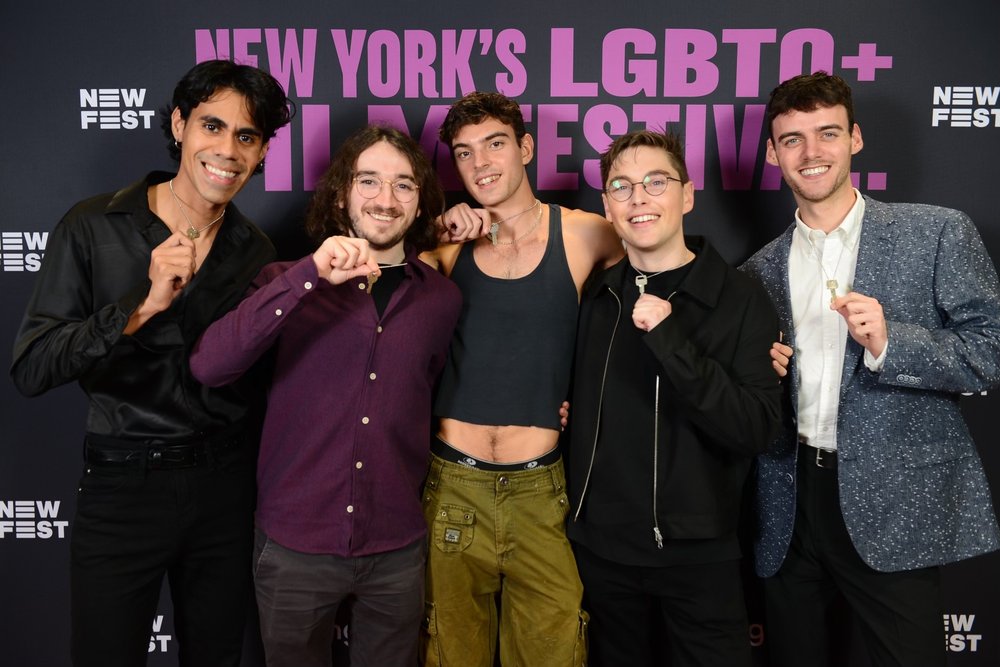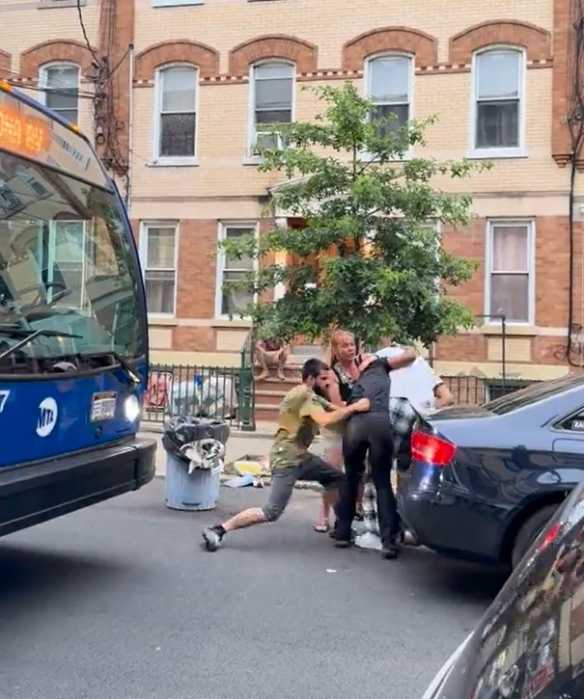Hit close to home
To The Editor:
I read the article in your paper today about Joe Picurro and the others that are having problems getting their money (news article, Feb. 2 – 8, “9/11 workers struggle to get workers’ comp”). Well what really upset me was that these people worked down there and all are sick now, and everyone is denying that they got sick from 9/11. Mr. Picurro had a picture of himself standing on the smoldering rubble and they say it could have been doctored. I think it is awful to blame these sick workers for doing these things. I’m sure all the people that died that day were well taken care of financially. Some of the people that received money may not have even been at the World Trade Center. How many people did they find they gave millions to and they weren’t even there and now they are denying these workers workers’ comp?
My son James Zadroga, an N.Y.P.D. detective, died last January and the coroner said with all probability, it was caused by his work at the W.T.C. We still do not have health benefits for his 5-year-old daughter. Do these people have to die before they could get workers’ compensation? I think it’s time for the mayor and president to admit that these people all got ill from 9/11 and give them the money and compensation they need.
My son got $500 a week and he couldn’t make it. He almost lost his house and car. So how could these people live on $67? This is just about enough money for gas to go back and forth for treatment. If they all have the same pulmonary conditions how do you think they got it? Did a big virus come through and only those people got it? Wake up — give these survivors their just due. Even after my son had an autopsy that showed he had dust, glass and other chemicals in his body, the mayor of New York still is denying. I thought this was America and we were supposed to help our people. Stop sending millions of dollars in Iraq to rebuild it. Charity begins at home. The mayor will spend money for all kinds of reconstruction but not for people’s lives. As an American, I think this is a disgrace. The people that are having pulmonary problems are having the same symptoms as my son, who died from pulmonary fibrosis.
Linda Zadroga
No check in the mail
To The Editor:
I wanted to say what an excellent job Chris Bragg did on the story about my husband Joe Picurro (news article, Feb. 2 – 8, “9/11 workers struggle to get workers’ comp”). I feel that he really has great insight into the plights of all the 9/11 responders who are struggling to survive.
We are still waiting for a new hearing date for my husband to go back in front of the workers’ compensation judge. His last check on Oct. 31, 2006 is long gone. We have since retained a new lawyer who is very knowledgeable about the workers’ compensation laws and the Uninsured Volunteer Fund created after 9/11 from funds given to the city by President Bush and the federal government. Thank you for not forgetting about all the heroes who rushed to the site after the most horrific attack on this country. My husband’s health gets worse everyday and that is not an exaggeration.
Laura Picurro
“Wife of [a] dying 9/11 volunteer responder”
Yes to turf
To The Editor:
Re “End the turf war with turf fields” (Talking Point, Feb. 2 – 8):
Thank you for running Councilmember Alan J. Gerson’s excellent essay on the need to rethink the surface at the Battery Park City ballfields.
Gerson’s proposal — to install a durable synthetic infill surface at the ballfields instead of the current failed sod surface — is strongly supported by the Downtown Little League, Downtown Soccer League and the leaders of the P.T.A.’s at P.S. 89 and 234, not to mention Assembly Speaker Sheldon Silver, Community Board 1 Chairperson Julie Menin, and the Ballfields Task Force of C.B. 1.
As Gerson points out, synthetic turf has come a long way from the Astroturf of 30 years ago. The newest systems are softer than grass, better for kids’ bodies, cheaper to maintain and will immediately expand community access 40 to 60 percent per year.
The muddy fiasco of the last soccer season has been enough to convince our leadership that action is required. And as bad as mud conditions are, they will soon get worse. The 1.6 million square foot Goldman Sachs tower now going up to the south of the ballfields will lock the fields in heavy shadow for much of the day. The Battery Park City Parks Conservancy currently plans to shift to a more shade-tolerant grass variant to compensate. But such varieties are even less hardy than the type used now, meaning that the fields will turn to mud even earlier in the season.
Meantime, our leagues — like our schools — just keep growing.
More kids, worse facilities… sounds like the Downtown we all dreamed of.
Kudos to Alan Gerson for taking the lead yet again on this critical issue.
Mark Costello
President Downtown Little League
To The Editor:
Hooray to Councilman Gerson for his voice of approval to the Downtown Little League and Downtown Soccer League proposal to resurface the Battery Park City ball fields with field turf. It is unconscionable that the Battery Park City Authority, the entity that decides what the field surface will be, should be so dismissive of the proposal to resurface the fields. It is obvious in the simplest analysis that both leagues will have much more field time if field turf were installed, and considering that both leagues are busting at the seams with kids, resurfacing would be a simple solution.
This is also an opportune time to resolve this issue since once the Millstein towers are constructed to the immediate west, the fields will have to be reconstructed, once again. Many fields throughout the city are being resurfaced for the simple reason that there is such a shortage of open space for kids to play, and field turf dramatically increases the amount of time the fields can be used. Let’s get it done. For the kids.
Marshal Coleman
Coordinator of the Downtown Little League’s Majors Division
Southbridge debate
To The Editor:
Wally Dimson states that Southbridge residents who “are uncomfortable with accepting any degree of uncertainty” can “opt out,” being guaranteed rent increases “no greater than those… of rent-stabilized apartments” (Letters, Jan. 26 – Feb. 1) — a bad deal compared to how maintenance rises.
That pleasant phrase “opt out” really means residents who can’t afford risking maintenance increases must give up their home-ownership and become renters, subject to a landlord. They lose their actual “Southbridge rights” to vote, to run for the board, to have a say in Southbridge. The landlord, which the study suggests could be a group of investors from outside or inside, would indisputably gain from the low-rent tenant’s departure. Considering how people behave when they think they’re being denied money, what faces the new renters? Though protected on paper, their future may include Housing Court.
Wally is calmly asking his neighbors not only to give up being homeowners and rent from a landlord-to-be-determined-later, but to pay more as well, a severe penalty for being unwilling to throw their chips in with him and bet the rent.
Regarding Wally’s metaphor of penguins on a melting iceberg — talk about scare tactics! As demonstrated by Richard Heitler using the figures in the feasibility study itself at the Cooperators for Mitchell-Lama’s last meeting, Southbridge is financially sound. The mortgage is easily covered, along with electric, in our maintenance. Capital improvements are already funded except for $4 million, which could at worst be paid for by either a low-interest loan which would add $15 a month, or a $40-a-month five-year assessment. The city is negotiating with us to buy property for a small park, too.
Perhaps Wally shouldn’t worry about penguins. Perhaps his adherents should worry about lemmings.
Kathryn Keppler
To The Editor:
Re “Few Southbridgers cross Gold to hear of waiting riches” (news article, Feb. 2 – 8):
I believe that your article on Southbridge Towers drew an erroneous conclusion that residents stayed home because of disinterest in the subject. I also think you low-balled the turn-out. My own estimate was closer to 33 percent based on my observation of the full orchestra section of the auditorium. It should be remembered that many people have already made up their minds, one way or another, and don’t feel the need for further information, which is all this meeting was about. Others have read the study and are confident of their understanding and also had no need for further clarification. Finally, the meeting was disrupted by a fire drill and many people simply went home rather than tolerating the cold. Therefore, I would call this turn-out for an information-only meeting successful for those who needed to attend.
Another issue I would like to comment on is board president John Fratta’s mantra about the study’s “fuzzy math.” I think after making this charge for so long he has an obligation to point out exactly where and how he thinks the math is fuzzy, especially since he was among those who voted for Mr. Saft’s company to do the study.
Carol B. Weinbaum
To The Editor:
Re “Few Southbridgers cross Gold to hear of waiting riches” (news article, Feb. 2 – 8):
After attending the meeting at Pace, it’s evident that Mr. Saft did a brilliant job of clarifying many issues. Anyone who really took the time to listen to what he said would conclude that opposing privatization would not make financial sense for Southbridge. When a question regarding Mitchell-Lama was asked, Mr. Saft said it all when he pointed out that while Mitchell-Lama was a wonderful program, unfortunately, it did not factor in the cost of repairing aging buildings — a cost that will fall squarely on the shoulders of Southbridge residents.
And with due respect to Mr. Fratta — the absentees were not only residents opposed to privatization, but just as many, if not more, of those in favor — not to mention the ones who are away for the winter. Many have made up their minds long before the Pace meeting, and did not need reinforcement by attending. Furthermore, I think that his calling the report “biased” is a cheap shot and an affront to Mr. Saft, who did a thorough and professional job, and who has no vested interest either way.
It’s time to realize that there is no magic Mitchell-Lama wand we can wave to make our financial problems disappear. It was a wonderful program that allowed Southbridge to flourish, but unfortunately, will be the very reason for its demise. Privatization is not a dirty word — it is a chance worth taking to assure that those of us who want to continue living here can continue to do so without fear of being priced out of our homes — which I fear will happen if we remain status quo.
Rosemarie Ferrara
Right about schools
To The Editor:
Angela Benfield made some salient points in “Don’t sacrifice rec center for desperately-needed school” (Talking Point, Feb. 2 – 8). School space is desperately needed. P.S. 89 is becoming increasingly overcrowded and parents are desperate to find additional school space.
I agree with Angela that Battery Park City is a “great community [with] wonderful, high achieving schools.”
She was also correct to point out that P.S. 89 was built to accommodate three classes per grade. It currently has four kindergarten and first-grade classes, but only two fourth grades, both of which are over-crowded.
Classroom overcrowding is a serious problem, and we need to take action. We need to prioritize quality public education.
I think Angela said it best: “The bottom line is we need a new school in Battery Park City and we need it yesterday.”
Dennis Gault
P.S. 89 P.T.A. co-president
‘Borat’ hype
To The Editor:
Re “How I was duped by Ali G” (Essay by Linda Stein, Oct. 13 – 19, 2006):
I was looking for some sanity in the “Borat” over-praise and was so relieved to find an intelligent, sensitive article. I was glad to hear Linda Stein threw him out. I wish her well in her work.
Sue Morse
Letters policy
Downtown Express welcomes letters to The Editor. They must include the writer’s first and last name, a phone number for confirmation purposes only, and any affiliation that relates directly to the letter’s subject matter. Letters should be less than 300 words. Downtown Express reserves the right to edit letters for space, clarity, civility or libel reasons. Letters should be e-mailed to news@DowntownExpress.com or can be mailed to 145 Sixth Ave., N.Y., N.Y. 10013.































